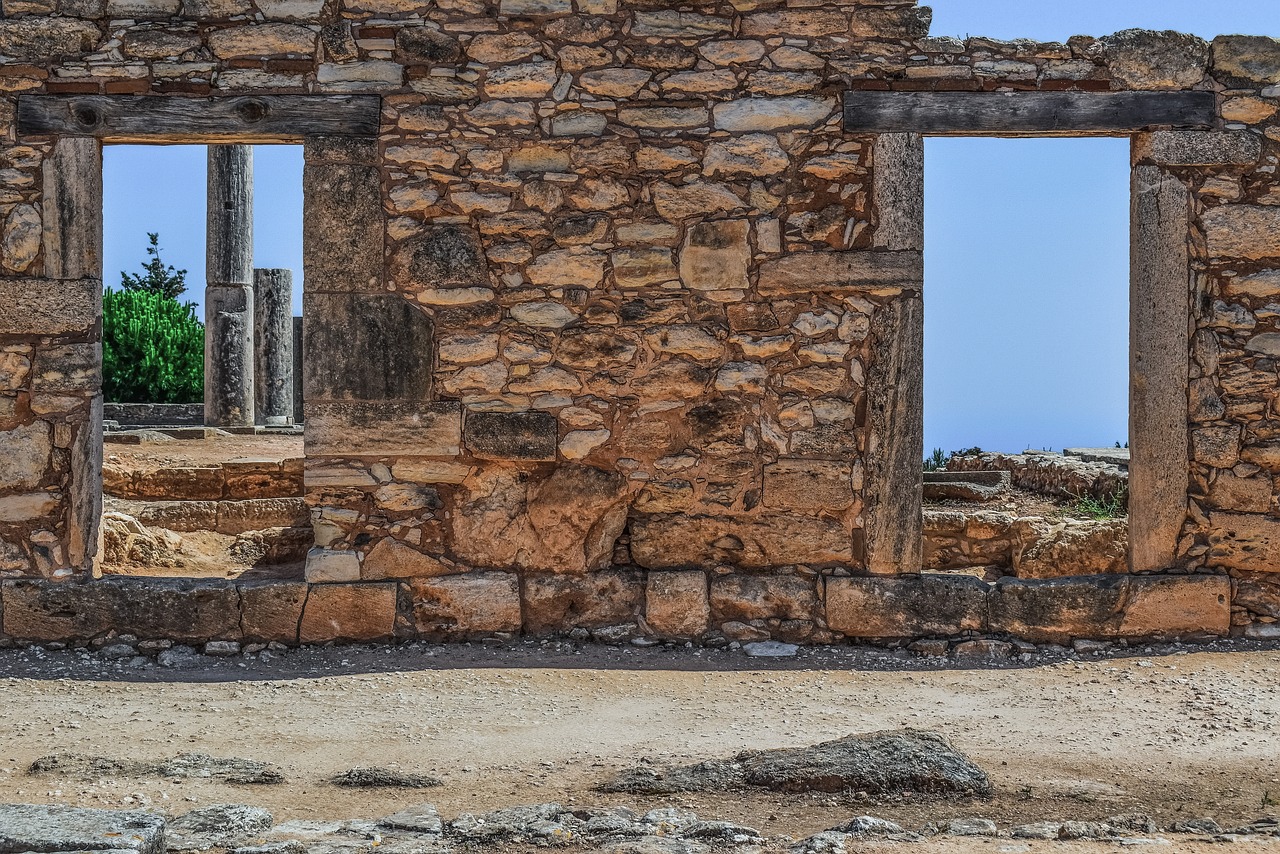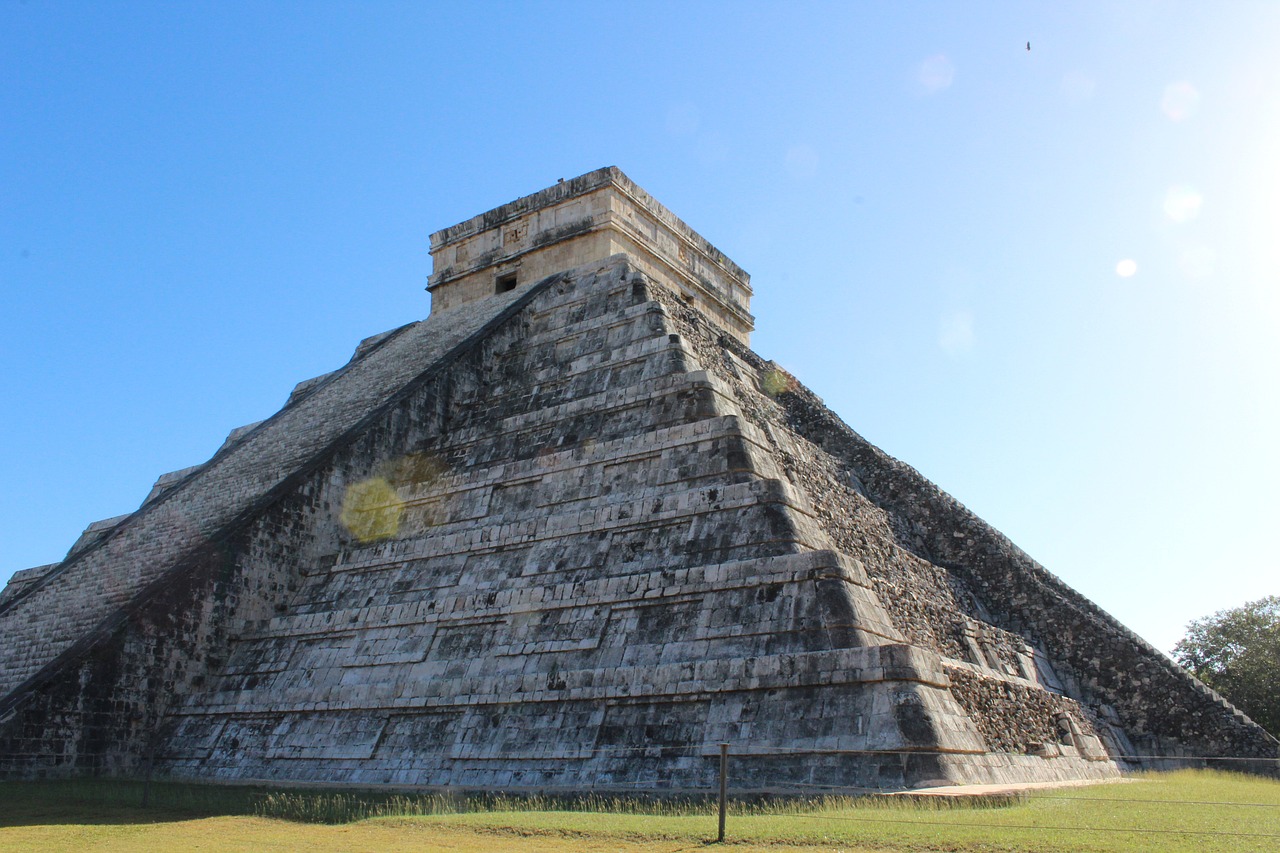The Discovery of the Ancient Sumerian Tablets
The discovery of the ancient Sumerian tablets stands as a monumental event that has reshaped our understanding of history, language, and civilization. Unearthing these ancient artifacts has opened a gateway to a world long forgotten, offering a glimpse into the lives and beliefs of one of the earliest known civilizations on Earth.
These tablets originate from the ancient Sumerian civilization, a culture that thrived in Mesopotamia, present-day Iraq, around 4500-1900 BCE. Known for their advancements in writing, mathematics, and governance, the Sumerians laid the foundation for many aspects of modern society.
Archaeological excavations at sites such as Ur, Uruk, and Nippur have yielded a treasure trove of Sumerian tablets. The meticulous methods employed by archaeologists in unearthing and preserving these fragile clay tablets have ensured that their valuable contents are not lost to time.
Upon deciphering the intricate cuneiform script adorning the tablets, researchers have uncovered a wealth of information about the daily life, religious practices, and societal structures of the ancient Sumerians. These inscriptions provide a vivid picture of a civilization that flourished millennia ago.
The translation process of these texts into modern languages has been a collaborative effort involving archaeologists, linguists, and historians. This interdisciplinary approach has been crucial in piecing together the fragmented puzzle of Sumerian history and culture.
The impact of these discoveries reverberates across various fields, influencing our understanding of early civilizations, ancient languages, and cultural practices. The Sumerian tablets have become invaluable artifacts that bridge the gap between the past and the present, enriching our knowledge of human history.
Technological advancements have played a pivotal role in the study and preservation of these ancient tablets. Through digital imaging, 3D scanning, and other innovative methods, researchers can delve deeper into the contents of the tablets, unraveling more mysteries of the past.
The legacy of the Sumerian tablets endures as a testament to the ingenuity and creativity of an ancient civilization. These artifacts serve as a time capsule, preserving the cultural heritage and wisdom of the Sumerians for future generations to explore and appreciate.

History of Sumerian Civilization
The ancient Sumerian civilization, one of the earliest known civilizations in the world, flourished in Mesopotamia, modern-day Iraq, around 4500-1900 BCE. This remarkable civilization is credited with numerous groundbreaking achievements that laid the foundation for future societies. The Sumerians were pioneers in various fields, including agriculture, architecture, mathematics, and governance. Their innovative irrigation systems allowed for successful agriculture in the region, leading to surplus food production and the development of complex urban centers.
Moreover, the Sumerians are known for their invention of writing, specifically the cuneiform script, which was etched onto clay tablets. This form of writing enabled the recording of administrative, economic, and religious information, providing valuable insights into the daily life and beliefs of the ancient Sumerians. The Sumerian city-states, such as Uruk and Ur, were centers of trade, culture, and religious practices, showcasing the sophistication and complexity of Sumerian society.
The Sumerians also had a pantheon of gods and goddesses, with each city-state having its own patron deity. Their religious beliefs and rituals permeated every aspect of Sumerian life, influencing governance, social structure, and cultural practices. The ziggurats, massive stepped temples dedicated to the gods, served as focal points of religious ceremonies and community gatherings.
Trade played a vital role in the Sumerian civilization, as they engaged in extensive commerce with neighboring regions such as Egypt, the Indus Valley, and Anatolia. This exchange of goods and ideas contributed to the cultural richness and diversity of the Sumerian society, fostering innovation and artistic expression.
Despite facing challenges such as invasions and natural disasters, the Sumerian civilization left a lasting legacy that continues to fascinate and inspire scholars and enthusiasts alike. The discovery of the ancient Sumerian tablets has provided invaluable insights into this enigmatic civilization, shedding light on its history, achievements, and cultural practices.

Archaeological Excavations
Archaeological excavations have played a pivotal role in uncovering the mysteries of the ancient Sumerian civilization. The sites where the Sumerian tablets were discovered are like time capsules, offering a glimpse into the daily lives and beliefs of a long-lost civilization. Imagine skilled archaeologists meticulously sifting through layers of earth, carefully unearthing these fragile yet invaluable artifacts. It's akin to unraveling a captivating story written in stone, each tablet a piece of the puzzle that helps us reconstruct the past.
One of the most renowned excavation sites is the city of Ur, located in present-day Iraq. This ancient city, once a thriving hub of Sumerian culture, yielded a treasure trove of tablets that provided insights into the administrative, religious, and literary aspects of Sumerian society. The meticulous documentation of each discovery is a testament to the dedication and expertise of archaeologists who painstakingly piece together the fragments of history.
The methods employed in excavating and preserving these tablets are as fascinating as the artifacts themselves. From carefully brushing away dirt to using advanced imaging techniques for preservation, archaeologists employ a combination of traditional and modern approaches to ensure the longevity of these ancient texts. It's a delicate dance between uncovering the past and safeguarding it for future generations to marvel at.
Furthermore, the collaborative nature of archaeological excavations is truly remarkable. Archaeologists work hand in hand with historians, linguists, and preservation experts to ensure that the tablets are not only unearthed but also meticulously cataloged, studied, and shared with the world. The synergy of different disciplines coming together to unlock the secrets of the past is a testament to human curiosity and ingenuity.
In essence, archaeological excavations of Sumerian sites have not only unearthed physical artifacts but also opened a window into a bygone era, allowing us to connect with our ancient ancestors in ways previously thought impossible. Each tablet is a testament to the resilience of human knowledge and the enduring legacy of a civilization long forgotten but never truly lost.

Contents of the Tablets
The ancient Sumerian tablets, discovered in the cradle of civilization, provide a fascinating glimpse into the daily life, beliefs, and practices of the Sumerians. These clay tablets, inscribed with cuneiform script, contain a wealth of information that has revolutionized our understanding of this ancient civilization. From administrative records and economic transactions to religious rituals and literary works, the contents of the tablets offer a comprehensive view of Sumerian society.
One of the most intriguing aspects of the Sumerian tablets is the inclusion of creation myths and epic tales such as the famous Epic of Gilgamesh. These narratives not only entertain but also provide valuable insights into the religious beliefs and cosmology of the Sumerians. Additionally, the tablets contain hymns, prayers, and magical incantations that shed light on the spiritual practices and worldview of this ancient culture.
Moreover, the Sumerian tablets also document historical events, genealogies of rulers, and legal codes, offering a unique perspective on governance and justice in ancient Mesopotamia. The detailed records of agricultural practices, trade routes, and societal organization found on the tablets provide a comprehensive picture of the economic and social life of the Sumerians.
Through the meticulous study and translation of these ancient texts, scholars have been able to reconstruct the history and culture of the Sumerian civilization with remarkable accuracy. The contents of the tablets continue to captivate researchers and enthusiasts alike, offering a treasure trove of knowledge waiting to be uncovered and shared with the world.

Deciphering Cuneiform Script
Deciphering the intricate cuneiform script found on the ancient Sumerian tablets has been a monumental task that has unlocked a treasure trove of knowledge about this ancient civilization. Imagine trying to crack a code that has been dormant for thousands of years, each symbol holding a piece of the puzzle to understanding a lost language. This endeavor is akin to unraveling a mystery where each deciphered character reveals a glimpse into the past, like a time traveler reading messages from a bygone era.
The cuneiform script, characterized by wedge-shaped marks on clay tablets, posed a significant challenge to scholars due to its complexity and the passage of time. It required a combination of linguistic expertise, historical context, and sheer determination to unravel the meanings behind these ancient symbols. Like detectives piecing together clues, researchers meticulously studied the patterns and variations in the script to unlock its secrets.
Through years of dedication and collaboration, experts in linguistics, archaeology, and ancient history have made remarkable breakthroughs in deciphering cuneiform. The deciphered texts have provided insights into various aspects of Sumerian society, including their laws, religious beliefs, and daily life. It's as if a veil has been lifted, allowing us to peer into the past and witness the rich tapestry of the Sumerian civilization.
One of the key tools in deciphering cuneiform has been the use of comparative analysis with known languages and scripts. By identifying patterns and similarities with other languages, researchers have been able to assign meanings to cuneiform symbols and reconstruct the Sumerian language. This process is akin to solving a complex puzzle, where each piece fits together to form a coherent picture of the past.

Translation Process
The of the ancient Sumerian tablets is a fascinating journey that involves collaboration among experts from various fields. Archaeologists, linguists, and historians work together to unlock the secrets hidden within these ancient texts. The process begins with the careful examination of the inscriptions on the tablets, which are often written in cuneiform script, one of the earliest forms of writing in human history.
Deciphering the cuneiform script is a complex task that requires a deep understanding of the language and context in which these tablets were written. Linguists play a crucial role in translating the ancient Sumerian language into modern languages, making the content accessible to a wider audience.
Archaeologists provide valuable insights into the historical context of the texts, helping to piece together the puzzle of ancient Sumerian civilization. By studying the artifacts found alongside the tablets and the archaeological sites where they were discovered, researchers can gain a deeper understanding of the daily life, beliefs, and practices of the ancient Sumerians.
The translation process is not just about converting words from one language to another; it is about unraveling the rich tapestry of culture and history woven into these ancient texts. Each translated tablet adds a new layer to our understanding of the past, allowing us to glimpse into the lives of people who lived thousands of years ago.

Impact on Modern Knowledge
The discovery of the ancient Sumerian tablets has had a profound impact on modern knowledge across various disciplines. These ancient artifacts have provided invaluable insights into the history, language, and civilization of the Sumerians, revolutionizing our understanding of early human societies. By unlocking the secrets contained within these tablets, researchers have been able to piece together a more comprehensive narrative of the past, shedding light on the origins of writing, governance systems, and religious beliefs.
One of the most significant contributions of the Sumerian tablets to modern knowledge is in the field of linguistics. The decipherment of the cuneiform script used on these tablets has opened up new avenues for studying ancient languages and their evolution over time. Linguists have been able to trace linguistic connections between Sumerian and other language families, leading to a deeper understanding of language development and diffusion.
Furthermore, the discovery of the Sumerian tablets has had a major impact on archaeological research. By providing firsthand accounts of daily life, trade practices, and religious rituals of the Sumerians, these tablets have enriched our knowledge of ancient civilizations. Archaeologists have been able to corroborate archaeological findings with textual evidence, creating a more holistic picture of the past.
In the realm of history, the Sumerian tablets have challenged existing narratives and forced historians to reevaluate their understanding of early societies. The detailed records found on these tablets have provided new perspectives on political structures, social hierarchies, and cultural interactions in ancient Mesopotamia. As a result, our understanding of the development of complex societies has been significantly enhanced.
Moreover, the impact of the Sumerian tablets extends beyond academia and into popular culture. These ancient texts have captured the imagination of the public, inspiring works of fiction, movies, and art that draw upon the rich tapestry of Sumerian mythology and history. The legacy of the Sumerian civilization continues to resonate in modern society, reminding us of the enduring power of ancient knowledge.

Technological Advancements
Technological advancements have played a crucial role in the study and preservation of the ancient Sumerian tablets, enabling researchers to delve deeper into the insights offered by these valuable artifacts. Through the use of advanced imaging techniques, such as multispectral imaging and 3D scanning, experts have been able to uncover hidden details and inscriptions on the tablets that were previously unreadable to the naked eye.
Moreover, the development of digital databases and software programs specifically designed for cuneiform script has expedited the process of translating and analyzing the texts inscribed on the Sumerian tablets. These technological tools have not only accelerated the deciphering of the ancient language but have also facilitated collaboration among scholars from different disciplines, leading to a more comprehensive understanding of the Sumerian civilization.
Furthermore, the advent of virtual reality (VR) and augmented reality (AR) technologies has revolutionized the way we interact with and study the Sumerian tablets. By creating immersive digital experiences, researchers can virtually explore the contents of the tablets in a three-dimensional space, gaining new perspectives and insights into the ancient writings and illustrations.

Legacy of the Sumerian Tablets
The legacy of the ancient Sumerian tablets is nothing short of extraordinary. These clay tablets, inscribed with cuneiform script, serve as a time capsule, preserving the rich history, culture, and knowledge of the Sumerian civilization for future generations to unravel and appreciate. Like keys to a long-lost kingdom, these tablets unlock a treasure trove of information, offering insights into the daily lives, religious beliefs, legal systems, and technological advancements of one of the earliest known civilizations.
One of the most remarkable aspects of the legacy of the Sumerian tablets is their role in shaping the development of writing systems. The cuneiform script found on these tablets represents one of the earliest forms of writing in human history, laying the foundation for the written communication systems that would follow. By studying these ancient inscriptions, linguists and historians have gained a deeper understanding of the evolution of written language and the ways in which communication has evolved over millennia.
Furthermore, the legacy of the Sumerian tablets extends beyond linguistic and historical significance. These ancient artifacts provide a window into the economic, social, and political structures of the Sumerian society, offering valuable lessons and parallels that can be drawn to contemporary civilizations. By examining the administrative records, literary works, and religious texts inscribed on these tablets, researchers have been able to piece together a comprehensive picture of life in ancient Mesopotamia.
The enduring legacy of the Sumerian tablets also lies in their influence on modern scholarship and research. The insights gained from studying these ancient texts have fuelled advancements in various academic disciplines, from archaeology and anthropology to philosophy and literature. The discoveries made possible by the decipherment of the cuneiform script have opened up new avenues of exploration and inquiry, challenging existing paradigms and expanding our collective knowledge of human history.
Frequently Asked Questions
- What are the ancient Sumerian tablets?
The ancient Sumerian tablets are a collection of clay tablets inscribed with cuneiform script, containing valuable information about the history, culture, and daily life of the ancient Sumerians.
- Where were the Sumerian tablets discovered?
The Sumerian tablets were discovered in various archaeological sites in Mesopotamia, particularly in modern-day Iraq. Sites like Ur, Nippur, and Uruk have yielded a significant number of these ancient artifacts.
- How were the Sumerian tablets deciphered?
The decipherment of the Sumerian tablets involved the efforts of scholars and linguists who studied the cuneiform script and compared it with known languages. Through meticulous analysis and collaboration, the meanings of the inscriptions were gradually unlocked.
- What is the significance of the Sumerian tablets?
The Sumerian tablets hold immense importance as they provide insights into one of the earliest known civilizations in human history. They offer a window into the past, allowing us to understand the origins of writing, law, religion, and societal structures.
- How do the Sumerian tablets impact modern knowledge?
The discovery of the Sumerian tablets has greatly influenced various fields such as archaeology, linguistics, and history. It has expanded our understanding of ancient civilizations and paved the way for further research and discoveries.



















